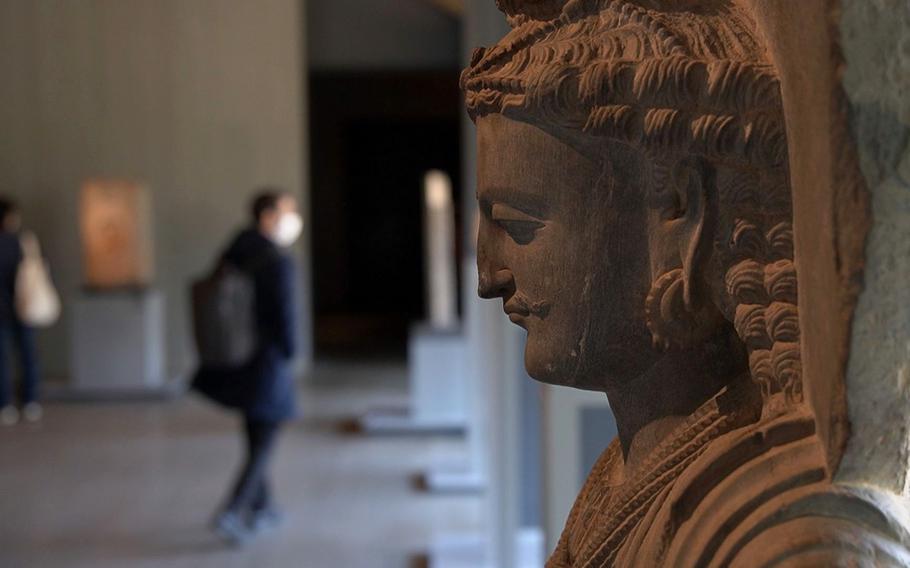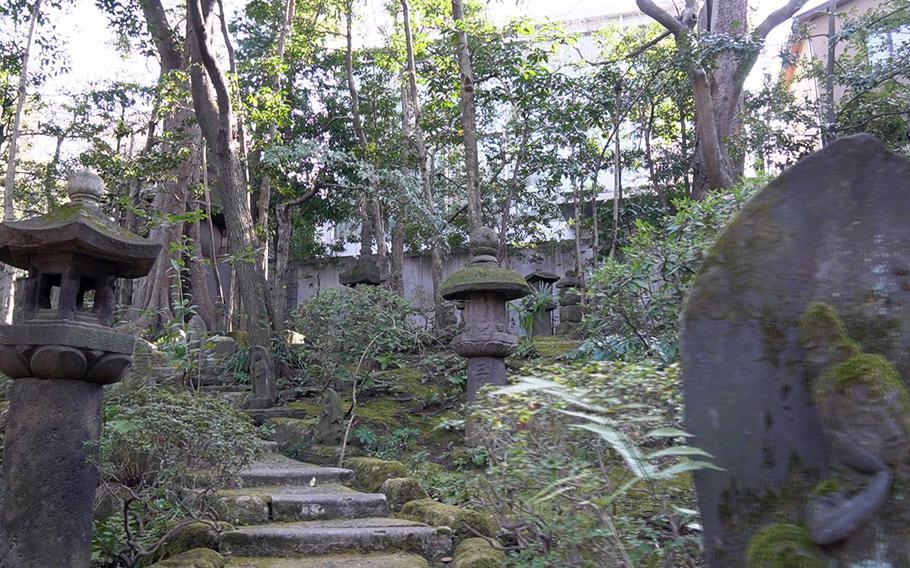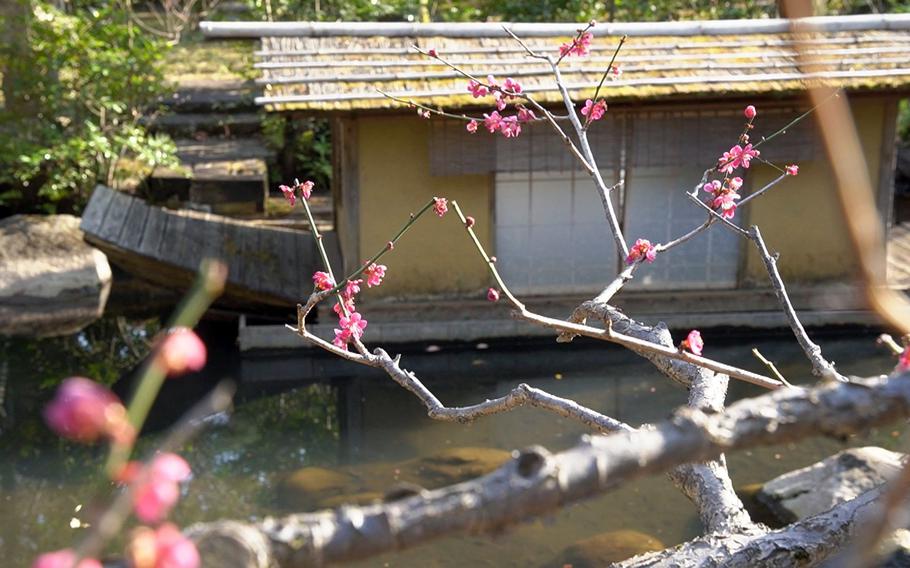
Nezu Museum in Tokyo houses more than 7,400 works, mostly from the collection of successful businessman and politician Kaichiro Nezu Sr. (Akifumi Ishikawa/Stars and Stripes)
Tucked away in the bustling, luxury-brand fashion district of Omotesando in central Tokyo stands a modern, Japanese-style building fenced off by bamboo.
A long walkway to the entrance of the Nezu Museum takes visitors from the city’s busy streets to the world of pre-modern Japanese and East Asian art.
Opened in 1941, the museum houses more than 7,400 works, mostly from the collection of successful businessman and politician Kaichiro Nezu Sr.
Situated on the site of the former Nezu family residence, the museum was one of Nezu’s final wishes.
The museum’s collections include seven official national treasures, 88 important cultural properties and 94 important art objects designated by Japan’s agency for cultural affairs.
Nezu’s collection boasts a wide range of art, from paintings and calligraphy to metalwork and armor. In his late years, he collected tea ware, pottery and other utensils related to the tea ceremony.
The collection includes the painting “Iris” by Korin Ogata, a painter and lacquer artist from the 18th century of the Edo period. It’s a national treasure that was painted on a pair of six-panel screens.

Nezu Museum's collections include seven official national treasures, 88 important cultural properties and 94 important art objects designated by Japan’s agency for cultural affairs. (Akifumi Ishikawa/Stars and Stripes)
Another exceptional piece is a double-ram zun – a cylindrical wine vessel – believed to be from the Hunan province in China of the 11th and 13th centuries B.C. It has a unique design with a ram on each side and is one of only two extant examples of a double-ram zun; the other is in the British Museum.
Large statues of the Buddha welcome museum visitors in an open-ceiling hallway.
The stone statues include a 3rd century Maitreya from the Kushan dynasty of northern India and central Asia, which shows the characteristics of the Ghandara style with waved hair and well-defined and handsome looks.
Another example is the Standing Buddha of the Chinese Northern Qi dynasty created in the 6th century and regarded as a masterpiece of large-scale marble. A third Buddha standing nearly 10 feet high, including the pedestal and Bodhisattva’s head, presents the typical sculptural style of the Tang dynasty in China.
Vast collections of art are not the only feature that the museum has to offer.
The museum went under a 3 ½-year renovation and reopened in 2009. The renewal included modern, Japanese-style architecture by contemporary architect Kengo Kuma, who also designed Japan National Stadium, the main venue for the Tokyo Olympics.
The museum’s large window across from the entrance opens up to a must-see, beautiful Japanese garden.

Nezu Museum's 4.2-acre Japanese garden features a pond with carp and tea houses that are rented out to the general public for tea ceremonies. (Akifumi Ishikawa/Stars and Stripes)
The 4.2-acre Japanese garden features a pond with carp and tea houses that are rented out to the general public for tea ceremonies. Visitors can enjoy the changing seasons through a variety of seasonal trees and flowers.
The museum’s garden and the historical and spiritual artwork bring about a quiet and calm atmosphere that lures visitors away from Tokyo’s busy streets.
On the QT
Directions: An 8-minute walk from the Omotesando Station Exit A5 on Tokyo Metro Ginza, Hanzomon and Chiyoda lines or a 10-minute walk from Hardy Barracks. 6-5-1 Minami-Aoyama, Minato-ku, Tokyo.
Times: Open 10 a.m. to 5 p.m. daily, except Monday, during exhibit installations and on New Year’s holiday. Entrance closes at 4:30 p.m. Closed Tuesday if Monday is a public holiday.
Costs: For general admission to special exhibitions, 1,500 yen for adults when purchased online and 1,600 yen for adults at the door; 1,200 yen online for students from high school and above and 1,300 yen at the door. For general admission to the museum collection, 1,300 yen online for adults and 1,400 yen at the door; 1,000 for students for high school and above online and 1,100 yen at the door. Free admission for junior high school students and younger. Online reservation is recommended.
Food: An on-site café serves food, including a Kobe beef meat pie with salad for 800 yen, coffee and other beverages.
Information: Online: www.nezu-muse.or.jp/en